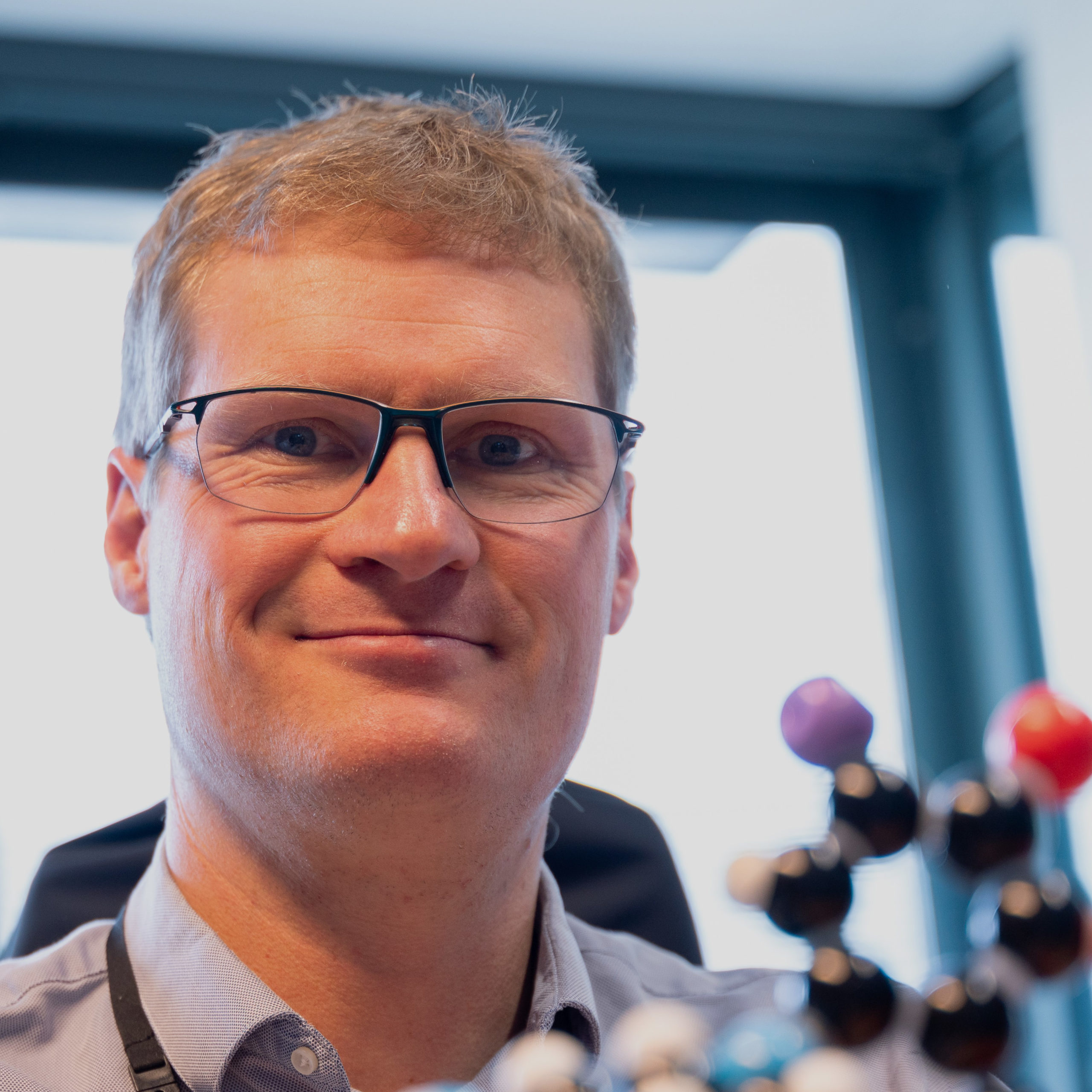13 May 2025
PLEASE NOTE: The Viewpoints on our website are to be read and freely shared by all. If they are republished, the following text should be used: “This Viewpoint was originally published on the REVIVE website revive.gardp.org, an activity of the Global Antibiotic Research & Development Partnership (GARDP).”
The views and opinions expressed in this article are solely those of the original author(s) and do not necessarily represent those of GARDP, their donors and partners, or other collaborators and contributors. GARDP is not responsible for the content of external sites.
The pivotal role of efflux pumps in determining bacterial antibiotic susceptibility
Efflux pumps are a key mechanism of bacterial defense against antibiotics, especially in Gram-negative bacteria, where they constitute a major obstacle to the discovery and development of new antibiotics. This intrinsic mechanism is a driver of baseline antibiotic resistance in these bacteria and can mediate supplementary resistance when overexpressed.1 In Gram-negative bacteria, there are six major families of antibiotic efflux pumps, of which transporters of the Resistance-Nodulation-Division (RND) family are responsible for extruding a broad range of xenobiotics out of the bacteria from the inner membrane and the periplasm.2
These data support that inhibiting these RND-antibiotic efflux pumps would greatly sensitize bacteria to antibiotic therapy, with the potential of fully reverting antibiotic resistance in some cases.
Gram-negative bacteria, such as Enterobacterales, A. baumannii, and P. aeruginosa, express at least one constitutive broad-spectrum antibiotic RND pump (many express multiple pumps), responsible for their basal antibiotic resistance.3 Numerous groups have emphatically demonstrated the central role of these pumps in regulating antibiotic susceptibility through their genetic inactivation.4–7 These data support that inhibiting these RND-antibiotic efflux pumps would greatly sensitize bacteria to antibiotic therapy, with the potential of fully reverting antibiotic resistance in some cases.
Inhibition of RND pumps in Gram-negative bacteria to boost antibiotic activity
RND efflux pumps systems are composed of three parts; an inner membrane component (the active pump), a membrane fusion protein (also called periplasmic adaptor protein), and an outer membrane channel.8 To inhibit such RND efflux pumps, several chemical families have been discovered (summarized below), with the majority targeting the inner membrane pump component. 2,9
The first described efflux pump inhibitor (EPI) was the peptidomimetic PaβN, which enhances in vitro antibiotic activity in P. aeruginosa, E. coli and A. baumannii, and in vivo, two PAβN analogues improved levofloxacin efficacy in a murine P. aeruginosa model of infection. However, the development of these analogues was halted due to unfavourable pharmacokinetic (PK) profile and toxicity. Next, pyridopyrimidine-based EPIs were described with a potent ability to enhance antibiotic activity in vitro against P. aeruginosa and E. coli. In vivo, the lead compound D13-9001 increased aztreonam activity in a rat model of P. aeruginosa lung infection, but no follow-up has been published. A series of very potent pyranopyridine-based EPIs were then developed by MicroBiotix, of which an advanced analogue, MBX4191, was demonstrated to rescue minocycline activity in a murine model of infection with a carbapenem/minocycline-resistant K. pneumoniae strain (priority pathogen).10 Indole 2-carboxamide-based EPIs, developed by Taxis Pharmaceuticals, represent an additional chemical series that potentiates the activity of several antibiotics on P. aeruginosa, with TXA01182 able to enhance cefepime activity in a murine septicaemia model of P. aeruginosa infection. Finally, pyridylpiperazine (PyrPip)-based EPIs, make up another promising chemical series that boosts antibiotic activity in E. coli, K. pneumoniae, and, to a lesser extent, in A. baumnannii, with BDM91288 able to potentiate levofloxacin activity in a murine model of K. pneumoniae lung infection.10 The last three chemical series are still under development.
Mechanism of action studies of these EPIs have revealed two separate inhibitor binding pockets in the inner membrane pump: the “deep binding pocket,” where inhibitors hinder substrate transport (pyridopyrimidines- and pyranopyridines-based EPI), and an allosteric pocket in the transmembrane domain (PyrPip-based EPI), where inhibitors interfere with the pump energy translocation and/or catalytic cycling.9,11
The advances in EPI chemical diversity, specificity and potency make the field of EPI for reverting antibiotic resistance in priority pathogens a tangible reality.
Target product profile of RND-type efflux pump inhibitors
Currently, there are no EPIs in clinical development, and several important questions persist on the best way to develop such inhibitors to treat multidrug-resistant (MDR) infections. Importantly, it remains unclear which antibiotics can be boosted in the context of genetically diverse clinical MDR isolates. For this, a systematic study is needed to look at the impact of EPIs on the antibiotic susceptibility of a large variety of MDR clinical isolates, and to determine if this susceptibility can be decreased below their clinical breakpoint. Data thus far has shown promising activity of EPIs in enhancing the in vitro and in vivo activity of minocycline in MDR K. pneumoniae. Further studies are needed to enrich this data.10,12 Another critical point to evaluate is whether all EPI-enhanced antibiotics are suitable therapeutic options for treating Gram-negative MDR infections. To clarify, current antibiotic therapy is driven by bactericidal antibiotics such as fluoroquinolones and beta-lactams, while largely bacteriostatic antibiotics (such as macrolides or tetracyclines) are not often used to treat Gram-negative bacterial infections. To address such questions, in vivo studies with MDR clinical isolates will be necessary to probe the benefit of EPI/bacteriostatic antibiotic combinations.
A final unknown (though others remain) is how quickly resistance would appear against EPIs. Thus far, there are only limited reports of the selection of resistance to EPI due to point mutations in the pumps, and therefore, the frequency seems acceptably low. More likely, however, there will be resistance due to overexpression of target efflux pumps through mutations in regulators (such as ramR in K. pneumoniae), which can cause low-level resistance to EPIs, which can be overcome by higher doses. Further studies into EPI resistance in in vivo settings will be required to evaluate the real frequency of resistance.
A last point to consider is whether developing broad-spectrum (multi-RND, multi-species) or specific EPIs is preferable. For the moment, the inhibitors described have different potencies on Enterobacterales, P. aeruginosa and A. baumannii, and a clear analysis of the EPI profile on different RND pumps would be of great interest. Given the structural differences among RND pumps across bacterial species and the presence of multiple pumps within individual species, particularly P. aeruginosa and A. baumannii, designing EPIs capable of broadly inhibiting all pumps is challenging.
It is important to maintain the momentum in developing these EPIs so that promising agents can become clinical candidates and be evaluated for efficacy.
Drug development of EPI: important thoughts that need to be considered while optimizing inhibitors
As with the development of other drugs, it is necessary to optimize physicochemical and PK properties, as well as to minimize toxicity and off-target inhibition. For EPI development, it is also critical to consider the multi-organ PK profile in vivo to ensure that the pharmacological distribution aligns with that of the co-administered antibiotic. It is important to ensure that there are no compartments with sub-optimal concentrations that could favour the emergence of resistance and that both EPI and antibiotic reach the infection site at the same time. Medicinal chemistry optimization of compound distribution within specific organs poses a significant challenge, and to our knowledge, only the multi-organ PK profile of the PyrPip-EPI series has been published.13 In addition to antibiotic and EPI distribution, the overall pharmacokinetics-pharmacodynamics (PK/PD) relationship associated with EPI-antibiotic co-administration must also be considered. This is important as EPI PK parameters need to be aligned with the pharmacological drivers of the co-administered antibiotic.
Concluding remarks
The advances in EPI chemical diversity, specificity and potency make the field of EPI for reverting antibiotic resistance in priority pathogens a tangible reality. Despite this massive progress, many questions must be answered to develop EPIs with optimal properties and a well-defined target product profile (TPP). It is important to maintain the momentum in developing these EPIs so that promising agents can become clinical candidates and be evaluated for efficacy. Such developments may help both, to fight antimicrobial resistance to existing antibiotics, and to facilitate the development of new antibiotics that are otherwise pumped out of bacteria.
References
- Weston N, Sharma P, Ricci V, Piddock LJV (2018) Regulation of the AcrAB-TolC Efflux Pump in Enterobacteriaceae. Res Microbiol. 169 (7–8), 425–431.
- Duffey M, Jumde RP, da Costa RMA, Ropponen H-K, Blasco B, Piddock LJV (2024) Extending the Potency and Lifespan of Antibiotics: Inhibitors of Gram-Negative Bacterial Efflux Pumps. ACS Infect Dis. 10 (5), 1458–1482.
- Du D, Wang-Kan X, Neuberger A, van Veen HW, Pos KM, Piddock LJV et al. (2018) Multidrug Efflux Pumps: Structure, Function and Regulation. Nat Rev Microbiol. 16 (9), 523–539.
- Colclough AL, Alav I, Whittle EE, Pugh HL, Darby EM, Legood SW et al. (2020) RND Efflux Pumps in Gram-Negative Bacteria; Regulation, Structure and Role in Antibiotic Resistance. Future Microbiol. 15 (2), 143–157.
- Leus IV, Weeks JW, Bonifay V, Smith L, Richardson S, Zgurskaya HI (2018) Substrate Specificities and Efflux Efficiencies of RND Efflux Pumps of Acinetobacter Baumannii. J Bacteriol. 200 (13).
- Masuda N, Sakagawa E, Ohya S, Gotoh N, Tsujimoto H, Nishino T (2000) Substrate Specificities of MexAB-OprM, MexCD-OprJ, and MexXY-OprM Efflux Pumps in Pseudomonas Aeruginosa. Antimicrob Agents Chemother. 44 (12), 3322–3327.
- Teelucksingh T, Thompson LK, Zhu S, Kuehfuss NM, Goetz JA, Gilbert SE et al. (2022) A Genetic Platform to Investigate the Functions of Bacterial Drug Efflux Pumps. Nature Chemical Biology. 18 (12), 1399–1409.
- Kobylka J, Kuth MS, Müller RT, Geertsma ER, Pos KM (2019) AcrB: A Mean, Keen, Drug Efflux Machine. Ann N Y Acad Sci. nyas.14239.
- Compagne N, Vieira Da Cruz A, Müller RT, Hartkoorn RC, Flipo M, Pos KM (2023) Update on the Discovery of Efflux Pump Inhibitors against Critical Priority Gram-Negative Bacteria. Antibiotics. 12 (1), 180.
- REVIVE Webinar (2024) Efflux inhibitors: A strategy to tackle multidrug resistance [online; Accessed 12 May 2025].
- Plé C, Tam HK, Vieira Da Cruz A, Compagne N, Jiménez-Castellanos JC, Müller RT et al. (2022) Pyridylpiperazine-Based Allosteric Inhibitors of RND-Type Multidrug Efflux Pumps. Nat Commun. 13 (1), 1–11.
- Opperman TJ, Kwasny SM, Barber R, Cardinale SC, Carter K, Pulse M et al. (2018) In Vivo Proof of Principle for MBX-4191, A Pyranopyridine Efflux Pump Inhibitor. ASM Microbe Conference 2018, Abstr. 564.
- Vieira Da Cruz A, Jiménez-Castellanos J-C, Börnsen C, Van Maele L, Compagne N, Pradel E et al (2023) Pyridylpiperazine Efflux Pump Inhibitor Boosts in Vivo Antibiotic Efficacy against K. Pneumoniae. EMBO Mol Med. 16 (1), 93–111.

Marion Flipo is an assistant professor at the University of Lille, France, where she also completed her PhD in medicinal chemistry. Her research focuses on developing new strategies to overcome antimicrobial resistance in Mycobacterium tuberculosis and Gram-negative bacterial infections. She is currently leading a project funded by the French National Research Agency, aimed at optimizing efflux pump inhibitors to combat antimicrobial resistance in Enterobacterales infections.

Ruben C. Hartkoorn is the Research Director at the Institut Pasteur de Lille in France, leading a research team focused on antibacterial drug discovery and development to combat drug resistant bacteria. Current research programs include the development of a novel anti-tuberculosis drug, improving antibiotic penetration into bacteria by developing biomimetic Trojan horse antibiotics, and the development of efflux pump inhibitors to revert antibiotic resistance in Gram-negative bacteria.
The authors declare that they do not have any relationships or affiliations that could be construed as a potential conflict of interest.